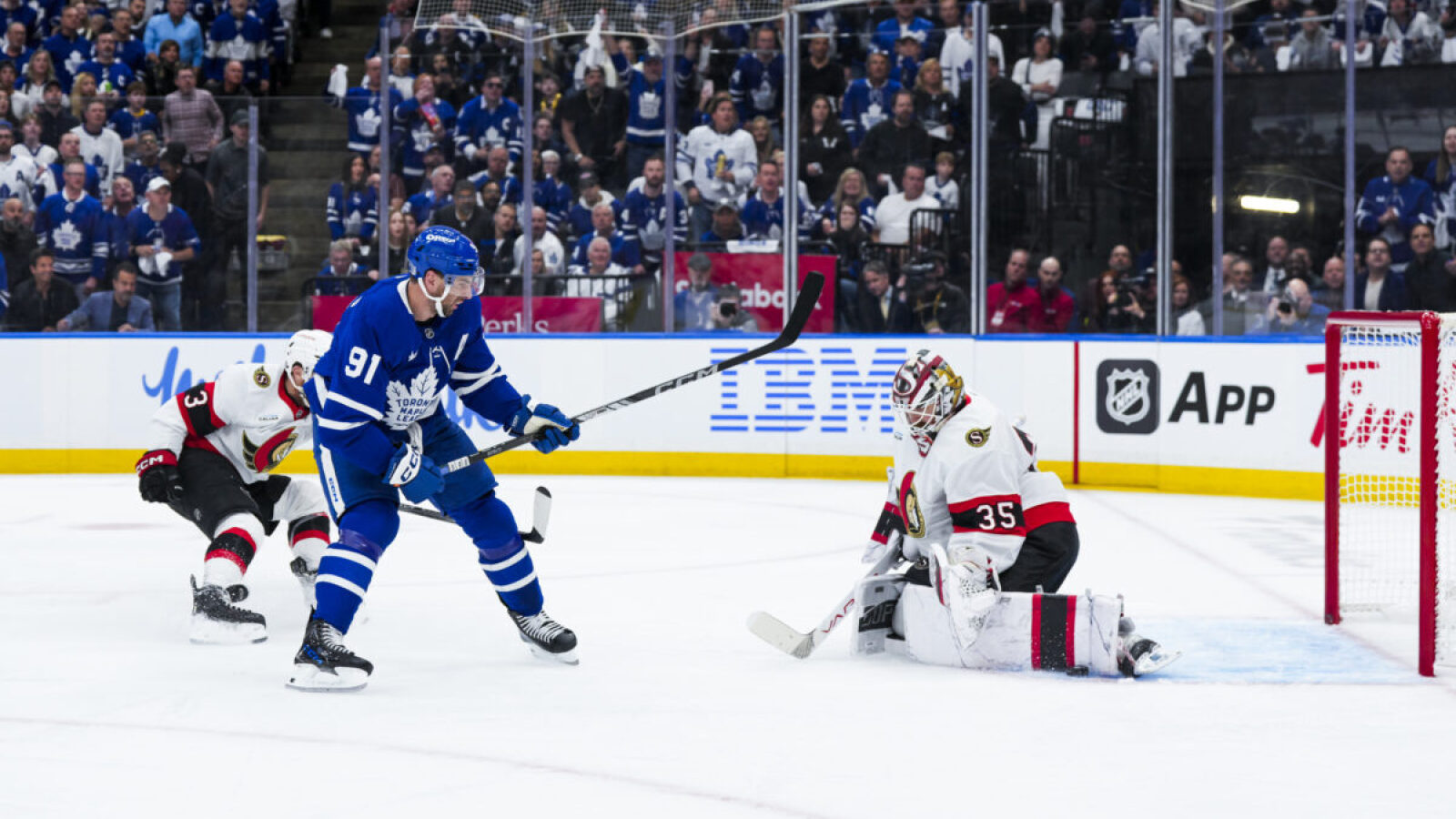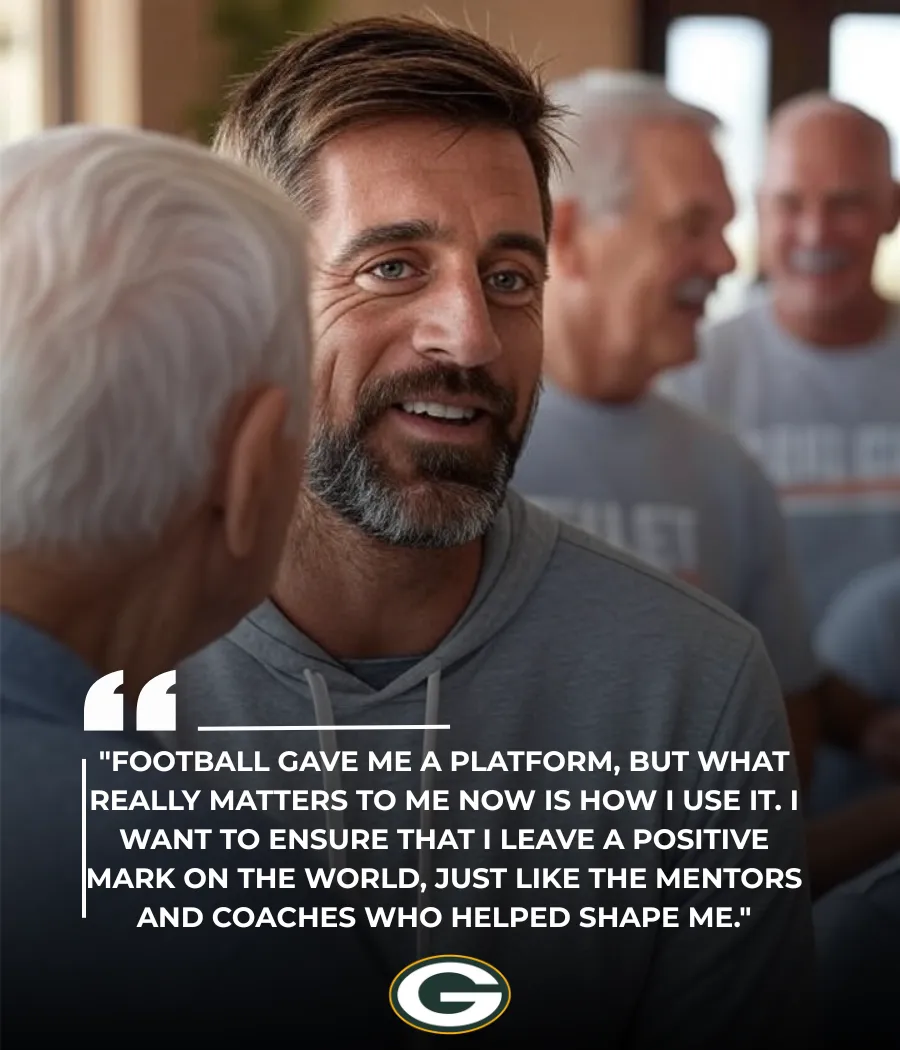Following another disappointing postseason, capped off by a Game 7 loss to the Florida Panthers, is it time to ask a deeper question than whether Mitch Marner will stay or leave? Instead, is this question just one of many that point to something much bigger and deeper? What is the state of the franchise? Are the Toronto Maple Leafs entering a period of decline?

Every year after a playoff exit, Maple Leafs fans fall into the same cycle: a little self-pity, a lot of angst, and the age-old question — is this the end? Usually, it’s more ritual than reality. But this time feels different. The tired “woe is me” chorus might be onto something. It’s time to admit what many fans have felt, but always sporadically. Could it be that the team’s Stanley Cup window is closing?
Two Hockey Analysts Seem to Be Tipping that Way
Just after the Maple Leafs were ousted, former NHLer Nick Kypreos didn’t mince words on Sportsnet Central. He emphasized that the time for cosmetic tweaks is over. Toronto has had elite talent, hype, and expectations year after year, and the outcome hasn’t changed. The regular-season magic hasn’t translated to playoff results. In Kypreos’ view, something foundational has to shift. And fast.
Adding to that urgency was an article from Jim Parsons of The Hockey Writers, published a week ago, containing a veiled warning. He explored the team’s declining appeal to top-tier free agents in his article, “Maple Leafs Dilemma: ‘No Superstar UFA Wants to Join a Team in Decline.’” Drawing on reporting from James Mirtle of The Athletic, Parsons pointed to three daunting obstacles: Toronto’s many roster needs, a weak free-agent class, and a marketplace filled with competitors with more cap space and better long-term outlooks.
So, where does this leave the Maple Leafs? Still talented but also vulnerable, aging, and increasingly unattractive to elite talent.
Three Reasons Why the Team Might Be in Decline
Every offseason, the Maple Leafs faithful go through the motions: disappointment, reflection, and the too-familiar hand-wringing about whether the team’s window is closing. Most years, it feels like noise — emotional fallout from another early exit. But this year, it might be more than that.
There’s a growing sense, echoed by insiders like Kypreos and Mirtle, that the Maple Leafs aren’t just stuck — they may be slipping. With key players like Marner and John Tavares possibly on the way out (although he clearly wants to stay), an aging core on defence, and a weak prospect pool offering little help, Toronto could be heading into an actual decline.

So what makes this year different? Here are three fundamental reasons the Maple Leafs might finally be on the downslope.
Reason 1. The Marner Question — and What It Reveals About the Core
The looming departure of Marner, whether by trade or free agency, is more than just a roster move — it’s a referendum on the core. Marner has been a lightning rod for fan frustration, but he’s also been a consistent top producer and a key part of Toronto’s success.
If he leaves, the Maple Leafs will immediately become less dynamic offensively and far less balanced. And it’s not just about him. Tavares, once the crown jewel of free agency, is aging and entering the final year of his large contract. That leaves Auston Matthews and William Nylander as the last two pillars of a once-heralded “Core Four.”
But do Matthews and Nylander possess the playoff fire and battle-tested leadership Toronto has lacked? That’s still an open question. With Marner and Tavares possibly on the way out, the team’s identity is shifting—and not necessarily in a direction that suggests greater playoff success.
Reason 2. The Maple Leafs Leadership Void and an Aging Defence
Assuming Marner and Tavares depart next year, who will lead the team? Matthews wears the “C,” but fans increasingly look to players like Chris Tanev to embody the grit and urgency that have been sorely missing. Veterans like Jake McCabe and Oliver Ekman-Larsson provide a steadying presence, and Matthew Knies might grow into a vocal role. But, the spiritual center of the team is unclear.

Although the Maple Leafs’ defence was noticeably stronger this past season than in years past, concerns remain about its long-term viability. The group has a soft underbelly — strong in stretches but vulnerable under pressure. Veterans like Morgan Rielly, McCabe, Ekman-Larsson, and Tanev brought much-needed experience and stability, but they’re all aging. In just two seasons, Rielly and McCabe will be 34, Ekman-Larsson 36, and Tanev — if still playing — will be pushing 38. That’s not the core of a Cup-contending blue line.
Meanwhile, the younger depth remains unproven. Players like Simon Benoit and Philippe Myers have filled in admirably in lower-pairing roles, but it’s unclear whether they can rise to more demanding assignments. The prospect pipeline isn’t overflowing with high-end defensive talent either, making it difficult to see where internal reinforcements might come from. Maybe Toronto could squeeze one more good year out of this group, but unless a younger generation emerges quickly, the blue line will likely become a growing concern rather than a dependable strength.
Reason 3. The Window For Maple Leafs Success Is Narrow — and the Farm Isn’t Deep
The Maple Leafs realistically have a two-year window to make a serious run. Matthews becomes an unrestricted free agent (UFA) in 2027-28. While re-signing seems likely, nothing is guaranteed in a league that’s become increasingly fluid.
The Maple Leafs have built some solid depth, but questions linger about whether that depth can rise to fill the growing gaps. If Marner walks in free agency, could Max Domi step up and handle top-line duties alongside Matthews? He’s shown flashes of chemistry — feeding the puck effectively to the team’s top scorer — but consistency has been elusive.
Beyond Domi, there isn’t an obvious high-end scorer ready to jump in. Scott Laughton has shown promise as a dependable depth center, but he’s not a game-breaker. Pontus Holmberg is trusted defensively and has the confidence of head coach Craig Berube, but he hasn’t yet shown the offensive upside some hoped for. Toronto’s two remaining top stars (Matthews and Nylander) remain elite, but the supporting cast is unsteady, and the prospect pool isn’t brimming with high-end help. Easton Cowan has created excitement, and Bobby McMann could still develop further, but no one in the system looks ready to replace the production of a 90- or 100-point player.
Prospects like Ben Danford and Alex Steeves might become NHL contributors — but they’re not saviours. Toronto’s front office built a skilled, high-octane regular-season team. But this group still comes up short regarding playoff grit, structure, and resilience — the things that matter in May and June.
What’s Next for the Maple Leafs in the Bigger Picture?
This isn’t to say the Maple Leafs are heading for disaster. They’ll still be competitive and capable of a playoff push. But the dream of dominance—a team that would grow together into a perennial Stanley Cup contender—feels increasingly out of reach. The time for lofty promises and patient belief is over. What’s next has to be more pragmatic: a roster built for playoff survival, not just regular-season skill.
If the hockey analysts are correct, this might not be a decline, but it’s a moment of reckoning. The Maple Leafs must evolve, or they’ll keep reliving the same story, only with older characters and fewer chances to change the ending. Now the question is how to do it, and how fast it can happen.
-1749254091-q80.webp)


